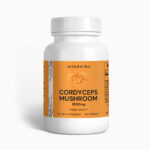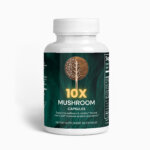
The 13 Healthiest Leafy Green Vegetables
Welcome to the verdant world of vitality, where the greenest guardians of good health rise like emerald champions in our gardens and on our plates. Leafy green vegetables are the unsung heroes in the quest for well-being, cloaked in fibrous layers and bursting with a symphony of vitamins and minerals. They are the allies we often overlook, yet they hold the key to unlocking a treasure chest of nutritional wealth.
In this vibrant odyssey, we unveil the 13 healthiest leafy green vegetables, a pantheon of powerhouse plants that do more than just add a splash of color to your meals. These are nature’s multivitamins, ready to revitalize your body, rejuvenate your skin, and sharpen your mind. Their whispers of wellness are loud enough to echo through the aisles of grocery stores, and their benefits profound enough to transform your health.
Join us as we journey through the lush landscape of these magnificent greens, where each leaf tells a tale of heart health, fortified bones, and bolstered immune systems. Prepare to be swayed by their charms as we reveal why these green gems deserve a standing ovation—and a permanent spot on your plate. Let’s dive into the green goodness and elevate our health to new heights!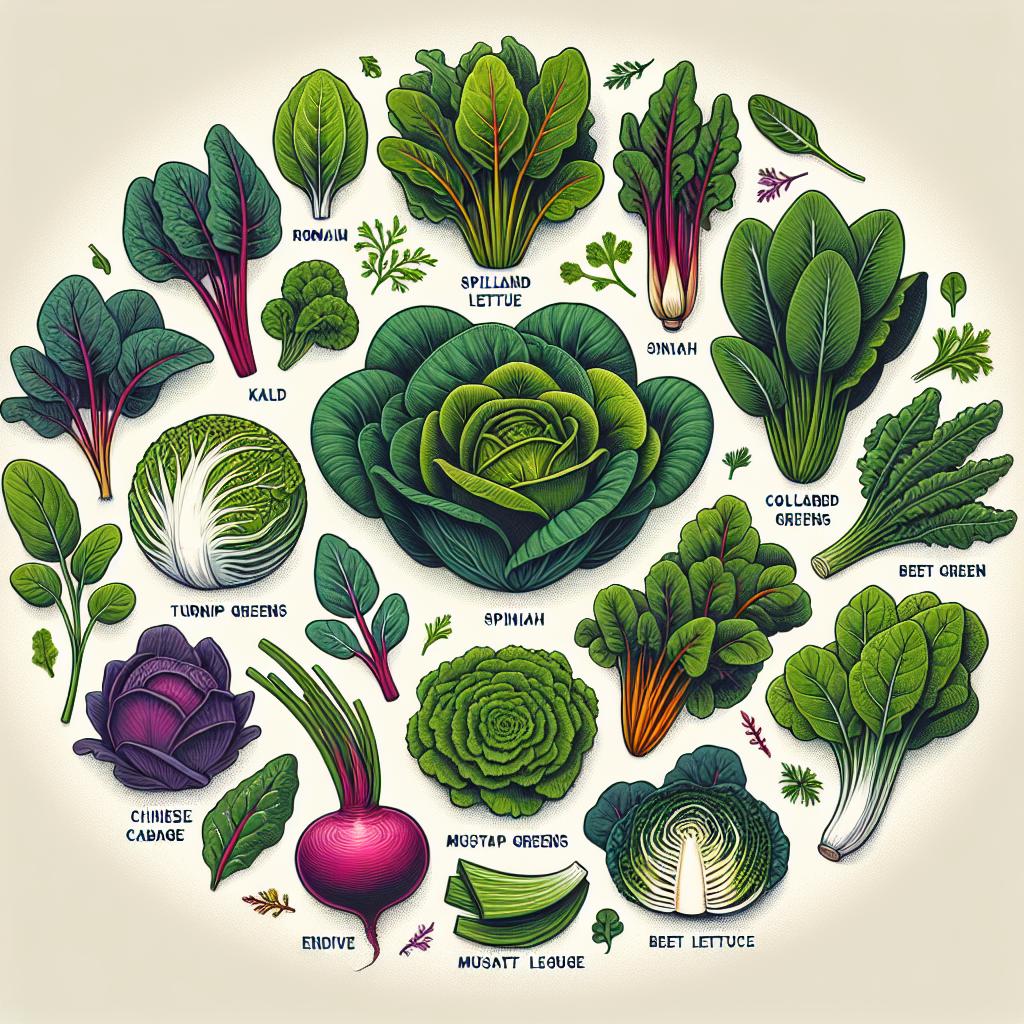
Table of Contents
- Unleashing Nature’s Powerhouses: The Marvels of Leafy Greens
- Exploring the Nutrient Goldmine in Spinach
- Why Kale Reigns Supreme in the Leafy Green Kingdom
- Collard Greens: Your Secret Weapon for a Healthier Life
- Arugula: Peppery Leaves with a Nutritional Punch
- Watercress: The Unsung Hero of Hydration and Health
- Swiss Chard: A Colored Canvas of Vitality and Taste
- Turn Over a New Leaf with Turnip Greens
- Mustard Greens: Spicing Up Your Health with Zest
- Bok Choy: The Asian Gem in Your Healthy Diet Blueprint
- Discovering the Delicate Strength of Microgreens
- Romaine Calm: The Heart-Healthy Champion of Greens
- Dandelion Greens: The Wild Card of Wellness Wonders
- Embrace the Taste of Health with Endive Enrichment
- Q&A
- The Conclusion
Unleashing Nature’s Powerhouses: The Marvels of Leafy Greens
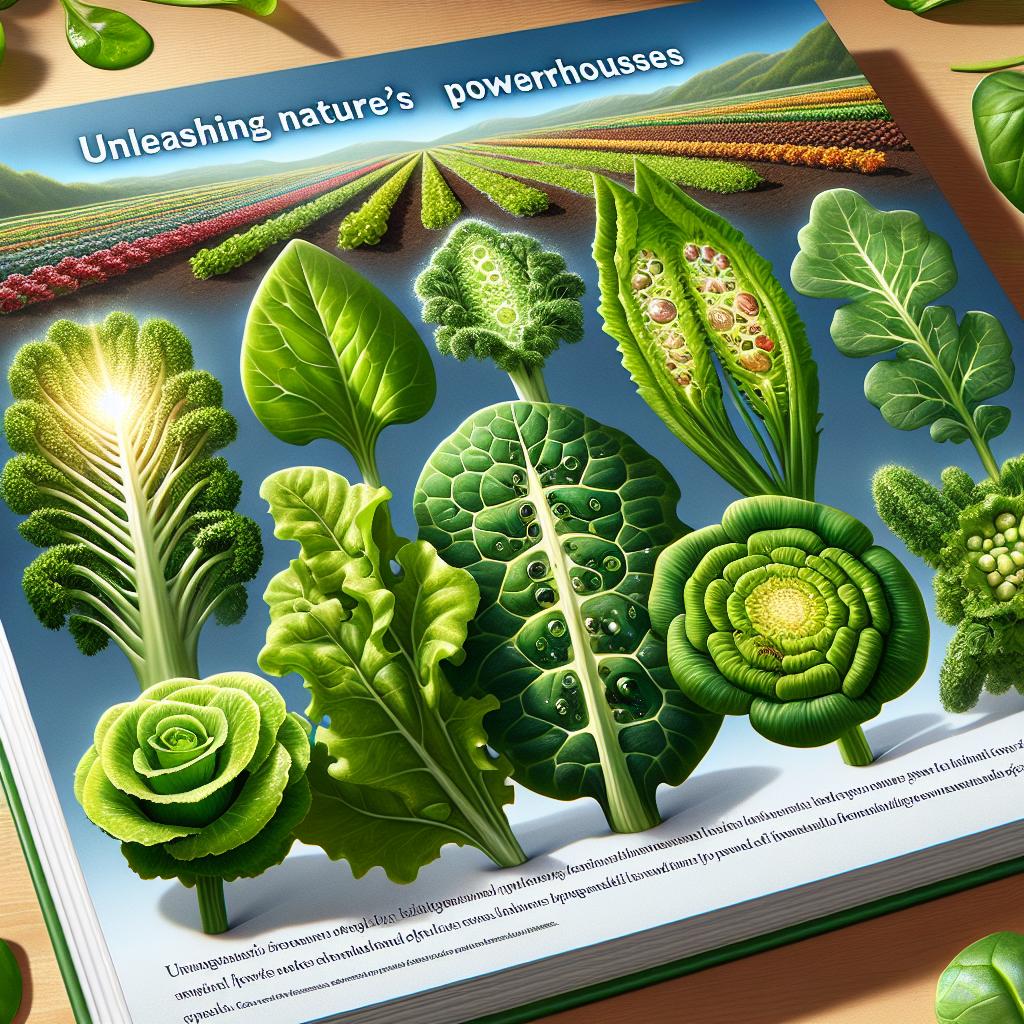
Embark on a journey through the verdant world of vegetables where the unsung heroes of nutrition reside: the leafy greens. Brimming with vitamins, minerals, and a cavalcade of antioxidants, these vegetal virtuosos are not just food, they’re powerful allies in your quest for health. Let’s deep into the garden of wellness and uncover the nutrient-dense champions that promise to revitalize your meals and your well-being.
Imagine a symphony of flavors and textures, from the crisp sweetness of romaine lettuce to the peppery punch of arugula. These culinary delights provide more than just taste; they serve up a fortifying feast for your body. Each leaf unfurls a treasure trove of fiber, aiding in digestion and keeping you full longer. Plus, leafy greens like spinach and kale are rich in folate and iron, energizing your body and sharpening your mind.
- Vitamin K in kale lays the foundation for strong bones
- The carotenoids in spinach offer protective benefits for your eyes
- Swiss chard contains betalains, known for their detoxifying power
- Collard greens come loaded with calcium, a boon for bone health
Cutting-edge research has unveiled a fascinating tableau where these leafy greens are not mere side dishes but can reign supreme as the main attraction. With mounting evidence suggesting their link to a reduced risk of chronic diseases—you’re not just eating your veggies, you’re investing in lifelong vitality. So, incorporate these green marvels into smoothies, salads, or steamed sides, and watch your health transform.
| Green Veggie | Key Nutrient | Health Benefit |
|---|---|---|
| Kale | Vitamin C | Immune Booster |
| Spinach | Iron | Energy Enhancer |
| Collard Greens | Calcium | Bone Strengthener |
| Mustard Greens | Antioxidants | Disease Fighter |
As your palate acclimatizes to the sheer vibrancy that these greens offer, remember that each forkful is a step towards a heartier life. It’s high time to give leafy greens the spotlight they deserve. In this verdant corner of the food pyramid, every bite is a brave stride towards health emancipation—a vibrant celebration of all that nature has to offer.
Exploring the Nutrient Goldmine in Spinach

into the lush, verdant leaves of spinach and you’ll discover a veritable treasure trove of nutrients waiting to elevate your health to new heights. This leafy green is more than just a staple in salads; it’s a powerhouse of vitamins and minerals packed into every bite. Diving deep into this emerald wonder, we unearth an impressive lineup of health-boosting benefits. Venture forth and behold the richness of spinach!
- Iron-Clad Health: Spinach is famously rich in iron, a mineral crucial for maintaining energy levels and aiding in oxygen transport throughout the body. Anemia, a condition marked by a deficiency in red blood cells, can be kept at bay with regular consumption of these iron-packed leaves.
- Vitamin K for bone integrity: This leafy wonder is brimming with Vitamin K, essential for strong bones and proper blood clotting. Integrating spinach into your diet can be a simple yet effective strategy for osteoporosis prevention.
- Antioxidant Arena: With a high concentration of antioxidants like beta-carotene, lutein, and zeaxanthin, spinach acts as a shield against oxidative stress and the ravages of free radicals in the body, which can lead to premature aging and chronic disease.
- Magnesium and Potassium: Spinach provides an ample dose of magnesium, promoting nerve function and heart health, while its potassium content regulates blood pressure. These minerals together champion cardiovascular wellness.
Moreover, the flexibility of spinach in various cuisines marks it as a versatile ingredient that not only boosts health but also enhances the gastronomic appeal. Whether it’s blended into smoothies, wilted into pastas, or tossed fresh into salads, its culinary potential is as vast as its nutritional profile. The chart below encapsulates the nutrient density of spinach:
| Nutrient | Amount per 100g |
| Vitamin A | 9377 IU |
| Vitamin C | 28.1 mg |
| Calcium | 99 mg |
| Dietary Fiber | 2.2 g |
Ancient civilizations heralded spinach for its medicinal properties, and modern science concurs with a resounding endorsement of its health benefits. Embrace this leafy green and let it be the cornerstone of your journey to a robust, nourished life. As the adage goes, ‘To change your life, you must first change your greens!’ Spinach is that exuberant change, unlocking a healthier, more vibrant you.
Why Kale Reigns Supreme in the Leafy Green Kingdom
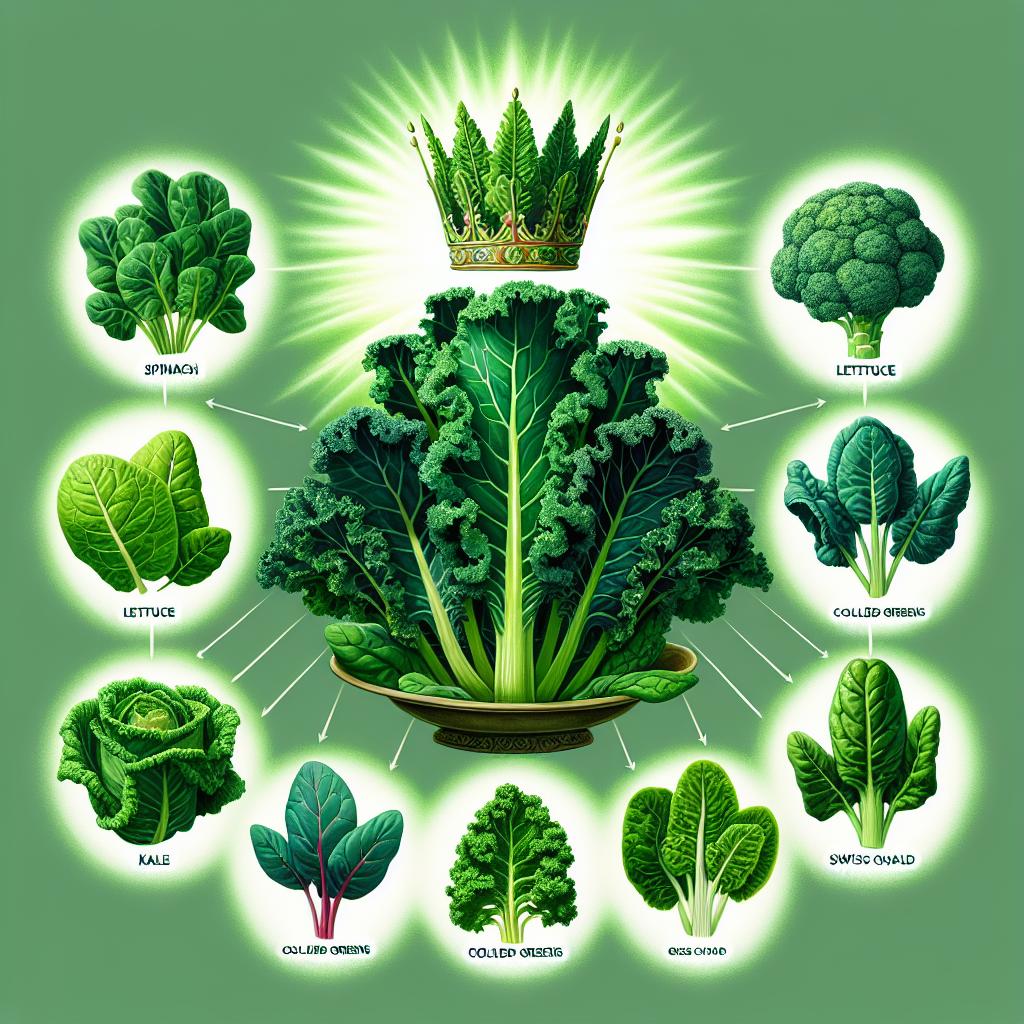
When it comes to leafy greens, kale is often hailed as the nutritional powerhouse par excellence. This frilly-edged green is a vibrant force to be reckoned with, brimming with health benefits that outshine its leafy companions. Here’s why you might just want to make kale a staple in your diet.
Firstly, kale’s nutrient profile is exceptional. It’s loaded with vitamins A, C, and K, and contains a respectable amount of calcium and potassium. This dense nutritional content supports everything from bone health to immune function. But that’s not all. Kale is also a treasure trove of antioxidants like quercetin and kaempferol, which have been studied for their effects on everything from aging to inflammation.
- Fiber Powerhouse: Each bite of kale is packed with fiber, crucial for healthy digestion.
- Detox Delight: The isothiocyanates (ITCs) made from glucosinolates in kale help regulate detox at a genetic level.
- Eye-Health Promoter: The presence of lutein and zeaxanthin, nutrients that safeguard against macular degeneration.
| Nutrient | % Daily Value (DV) |
|---|---|
| Vitamin K | 684% |
| Vitamin A | 206% |
| Vitamin C | 134% |
| Manganese | 26% |
Moreover, kale’s versatility in the kitchen means there’s no room for boredom. Whether you’re massaging those leaves for a tender kale salad, baking them into crunchy chips, or blending them into a green smoothie, kale adapts to each role with ease. By integrating this leafy superhero into your regular menu, you’re not just treating your taste buds—you’re giving your body a bouquet of benefits. So, elevate your plate, embrace the king of greens, and watch how your body thanks you for every leafy forkful.
Collard Greens: Your Secret Weapon for a Healthier Life

Imagine if every meal could be a step towards optimal health. Among the verdant variety of leafy greens, collard greens stand out as a nutritional powerhouse that begs to be included in your daily diet. These wide, flat leaves pack a punch of vitamins and minerals, with textures and flavors that adapt wonderfully to a myriad of recipes.
What makes collard greens so remarkable? For starters, their glucosinolate content, a nutrient heralded for its cancer-fighting properties. Collard greens are also an excellent source of vitamin A, crucial for maintaining good vision and skin health. Add to that a rich supply of vitamin C and calcium, and you’ve got a leafy green that supports bone health and immune function like no other.
- Fiber: Satiety and digestive health are provided through their high dietary fiber content.
- Antioxidants: They are abundant in antioxidants, defending the body against the oxidative stress that can lead to chronic diseases.
- Low in Calories: Perfect for those monitoring their caloric intake without skimping on nutrients.
Taste is no hurdle when it comes to incorporating collard greens into your diet. Their mild, earthy flavor can easily find a place in soups, stews, or a refreshing salad. For a truly Southern twist, they can be simmered slowly with a touch of smoked turkey or bacon, infused with robust flavors and providing a comforting meal that is as nutritious as it is delicious.
| Nutrient | Amount per 1 cup (cooked) | % Daily Value* |
|---|---|---|
| Vitamin K | 770 mcg | 643% |
| Vitamin A | 5,042 IU | 101% |
| Vitamin C | 34.6 mg | 58% |
| Calcium | 266 mg | 27% |
| Fiber | 7.6 g | 30% |
| * Percent Daily Values are based on a 2000 calorie diet. | ||
Introducing collard greens to your plate is more than a mere inclusion of greenery. It’s an investment in your long-term well-being, a delicious ally in your quest for a balanced, health-conscious lifestyle. So the next time you’re leafing through your recipe book or wandering the grocery store aisles, consider this robust vegetable your secret weapon for a healthier life.
Arugula: Peppery Leaves with a Nutritional Punch
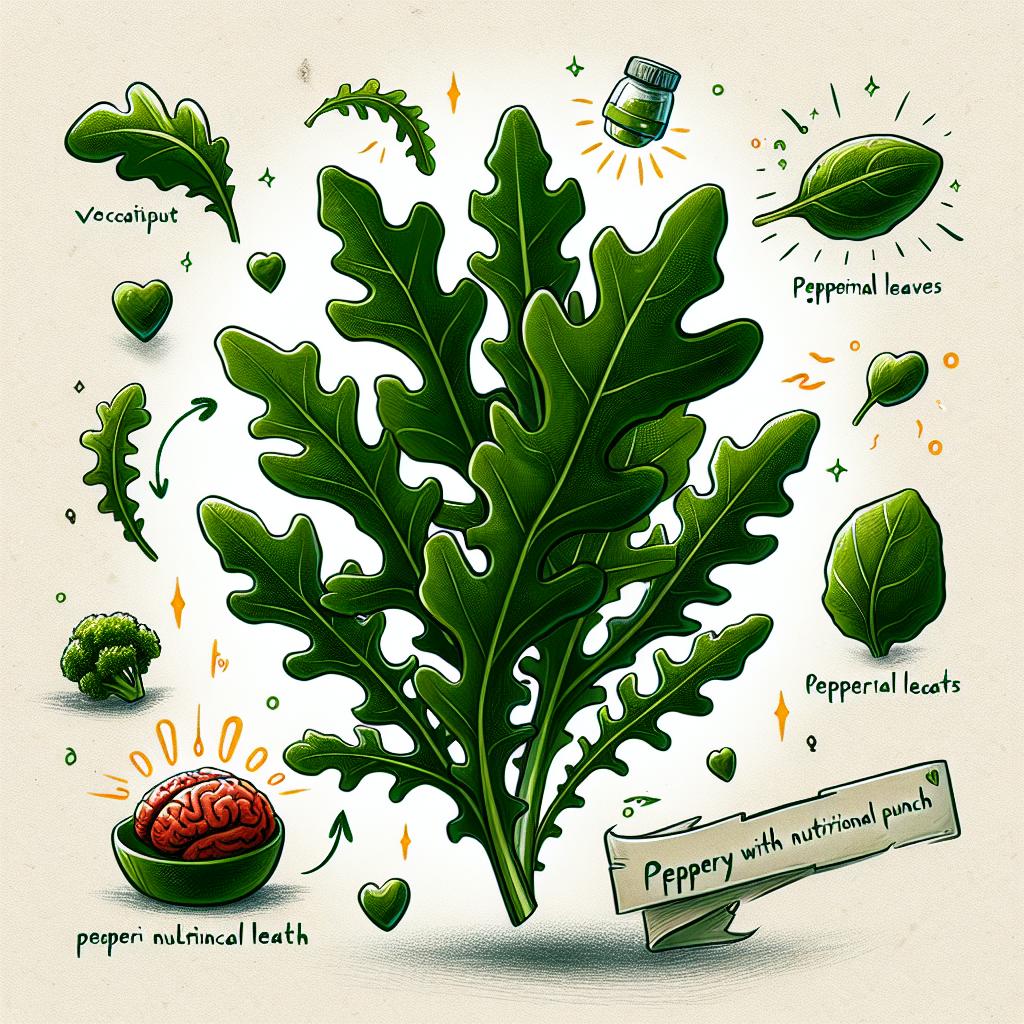
If you haven’t tried spicing up your salad bowl with the zest of arugula, you’re in for a delightful surprise. This leafy green, with its signature peppery kick, is more than just a salad staple—it’s a powerhouse of nutrition. Known by scientists as Eruca sativa, this plant is a relative of kale and cauliflower, but it boasts a unique flavor that can elevate even the simplest dishes.
Arugula is loaded with essential vitamins and minerals that benefit your health in myriad ways. Its leaves are abundant in Vitamin K, which is crucial for bone health and proper blood clotting. Just a cup of these peppery greens will deliver more than 20% of your daily recommended intake. Additionally, arugula is a great source of Vitamin C, calcium, and potassium—nutrients that support immune function, bone strength, and heart health, respectively.
- Folate: Vital for pregnant women and those planning to conceive, as it fosters healthy development of babies in utero.
- Antioxidants: Packed with compounds like quercetin and kaempferol, which protect cells from damage and may lower the risk of chronic diseases.
- Glucosinolates: The source of arugula’s bite, these chemicals are believed to have anti-cancer properties.
What’s more, incorporating arugula into your diet is a smart move for those watching their waistline. This veggie is incredibly low in calories, with a mere 5 calories per cup. Its high fiber content not only keeps you full longer but also helps in maintaining a healthy digestive system. Here’s a quick peek at what this leafy green brings to your plate:
| Nutrient | Amount per Cup | DV% |
|---|---|---|
| Vitamin A | 475 IU | 9% |
| Vitamin C | 3 mg | 4% |
| Calcium | 32 mg | 3% |
| Vitamin K | 21.7 mcg | 27% |
| Fiber | 0.6 g | 2% |
Giving your salad a zing with arugula isn’t just about flavor—it’s an easy and tasty strategy to inject your meals with vital nutrients. Whether you enjoy it raw, wilted in pastas, or as a peppery pizza topping, this nutrient-dense leaf is a culinary champion with benefits that extend far beyond the palate.
Watercress: The Unsung Hero of Hydration and Health

Imagine a verdant burst of nutrition and flavor, tucked away in the corner of the produce aisle—a superhero in the world of greens, waiting to be discovered. This is watercress, the peppery and crisp leafy green that’s often overlooked for its more popular cousins like spinach and kale. Yet, it’s bursting with hydration, offering moisture-packed leaves that are as refreshing as they are nourishing.
Watercress doesn’t just quench your thirst; it’s a powerhouse of vitamins and essential nutrients. A single serving can be a significant source of vitamin K, essential for bone health, as well as vitamins A and C, which are vital for a strong immune system. Add to that a generous helping of calcium, potassium, and manganese, and you’ll begin to see why watercress earns its place at the top of the nutrient-dense chart. Its impressive profile can be seen in the following table:
| Nutrient | % of Daily Value (per 100g) |
|---|---|
| Vitamin K | 312% |
| Vitamin A | 64% |
| Vitamin C | 72% |
| Calcium | 12% |
| Manganese | 9% |
But let’s not forget about antioxidants. Watercress is like a brush that sweeps away free radicals thanks to its high levels of glucosinolates, compounds that help detoxify your body and may lower the risk of certain cancers. The list of beneficial compounds in watercress includes quercetin and lutein, known for their anti-inflammatory properties. Take a sneak peek at how these antioxidants contribute to your well-being:
- Glucosinolates: May lower the risk of developing cancer
- Quercetin: Helps reduce inflammation and blood pressure
- Lutein: Supports eye health by filtering harmful high-energy light waves
The perks of incorporating watercress into your diet are impressive. It’s versatile too – blend it into smoothies, toss it into salads, or stir it into soups for that extra kick. Not only does it add a zesty punch to any dish, but its crisp texture also provides a satisfying crunch. With all these benefits, it’s a wonder that watercress isn’t already a staple in every kitchen. Dive into its hydrating, healthful embrace, and let this leafy green become your ally in wellness and good taste.
Swiss Chard: A Colored Canvas of Vitality and Taste

Imagine your plate adorned with the brilliant tones of Swiss chard, an artist’s palette where taste meets nutrition in vibrant pinks, yellows, and greens. This leafy confetti isn’t just about visual appeal; its health benefits make it an all-star ingredient for those seeking a rejuvenation in their diet. With a texture reminiscent of spinach and a flavor slightly earthier, Swiss chard brings a certain finesse to the culinary world, one that’s also backed by a robust nutrient profile.
- Rich in Vitamins A, C, and K
- Packed with Minerals like Magnesium and Potassium
- High in Fiber and Antioxidants
- Low in Calories and Carbs
This nutritional powerhouse is a friend to those managing their waistlines — a mere cup of cooked chard contains just 35 calories but ensures satiety with its high dietary fiber content. The high presence of antioxidants like beta-carotene, lutein, and zeaxanthin in Swiss chard not only shields your cells from oxidative stress but also provides a potential defense against chronic diseases.
| Nutrient | Benefit |
|---|---|
| Vitamin K | Essential for blood clotting and bone health |
| Magnesium | Supports metabolic health, muscle function |
| Iron | Critical for healthy blood cells |
| Fiber | Promotes digestive wellness |
Incorporate Swiss chard into your meals by sautéing it with a drizzle of olive oil and a sprinkle of garlic, or toss it raw into a salad for a crisp, fresh twist. You can also blend it into smoothies for a nutrient kick without compromising on flavor. Whichever way you choose to enjoy it, Swiss chard is more than just a feast for the eyes — it’s a celebration of health for your entire body.
Turn Over a New Leaf with Turnip Greens

When the talk turns to leafy greens, turnip greens tend to fly under the radar, yet they’re a veritable powerhouse when it comes to nutrition and health benefits. These unsung heroes, with their peppery bite, are making a comeback in kitchens where healthy eating is a priority. Not only are they rich in vitamins and minerals, but they also provide some unexpected perks for your health.
Incorporating turnip greens into your diet is like hitting the jackpot of antioxidants and phytonutrients. These natural compounds are essential for combating oxidative stress and inflammation, two villains in the story of chronic diseases. Plus, the high fiber content of turnip greens helps in maintaining a healthy digestive system. To top it off, they have been linked with improved bone health, thanks to their respectable calcium content.
From a culinary perspective, turnip greens are incredibly versatile. They can melt into stews and soups, bringing a depth of flavor and tons of nutrition. Or try sautéing them with a bit of garlic and olive oil for a simple, yet tasty side dish. If you want to maintain the greens’ robust profile of vitamins A, C, E, and K, as well as minerals like iron and manganese, giving them a quick steam is the way to go. Here’s a snapshot of their nutritional value per cup (cooked):
| Vitamin/Mineral | Amount |
|---|---|
| Vitamin A | 220% of the RDI |
| Vitamin C | 66% of the RDI |
| Calcium | 20% of the RDI |
| Dietary Fiber | 5 grams |
But there’s more: turnip greens have something unique — glucosinolates. These sulfur-containing compounds, while giving the greens their characteristic bitterness, are also potent warriors in the fight against cancer. Studies suggest that glucosinolates may slow down the growth of cancer cells. Integrating turnip greens into your meals could provide you with added protection against this serious health threat. To capitalize on all these benefits, why not toss a handful of raw turnip greens into your next smoothie or salad?
Turnip greens are inviting you to turn over a new leaf in your diet. Embrace these greens and let their robust health benefits and flavors revitalize your plates and well-being. Whether you’re a culinary expert or a beginner in the kitchen, these greens are poised to become your go-to ingredient for a life brimming with health.
Mustard Greens: Spicing Up Your Health with Zest

Introducing the piquant powerhouse that’s more than just a punchy accent in your salads: mustard greens. These verdant, peppery leaves are bursting with a symphony of nutrients that can turbocharge your wellness routine. Rich in vitamins A, C, and K, a helping of mustard greens is like a multivitamin straight from nature’s prescription pad. But the benefits don’t stop there; these greens are also chock-full of antioxidants and fiber, making it a go-to for the health-conscious gourmet.
Anyone looking to fortify their bones should consider these robust leaves their new best friend. Calcium, which is essential for maintaining bone strength and health, is plentiful in mustard greens. Ironic as it may seem, the delicate leaves pack a wallop when it comes to minerals too, with potassium and manganese taking prominent spots on the roster. This combination doesn’t just keep your bones in tip-top shape—it ensures your entire body sings in harmony.
If you’re caught in the crosshairs of a mid-day slump, give those sugary snacks a miss and reach for some mustard greens instead. The high iron content is a boon for those looking to combat fatigue and boost their energy levels. Moreover, the greens are a boon for those seeking to maintain a healthy weight; they’re low in calories yet high in satiety, thanks to the dietary fiber that makes you feel full longer.
- Vitamin A: Critical for maintaining good vision and immune function
- Vitamin C: A highly effective antioxidant known for skin health benefits
- Vitamin K: Crucial for blood clotting and bone metabolism
- Antioxidants: Guard against cellular damage from free radicals
- Fiber: Supports digestive health and can aid in weight management
| Nutrient | Benefit |
|---|---|
| Calcium | Strengthens bones |
| Potassium | Regulates fluid balance and blood pressure |
| Manganese | Supports metabolism and antioxidant function |
| Iron | Combats fatigue and boosts overall energy levels |
So the next time you’re browsing the produce aisle, be bold and let mustard greens zest up your basket. Not only will your palate thank you with every spicy, tangy bite but your body will revel in the flood of health benefits that come along for the ride. Consider it a zesty invitation to a more vibrant you!
Bok Choy: The Asian Gem in Your Healthy Diet Blueprint
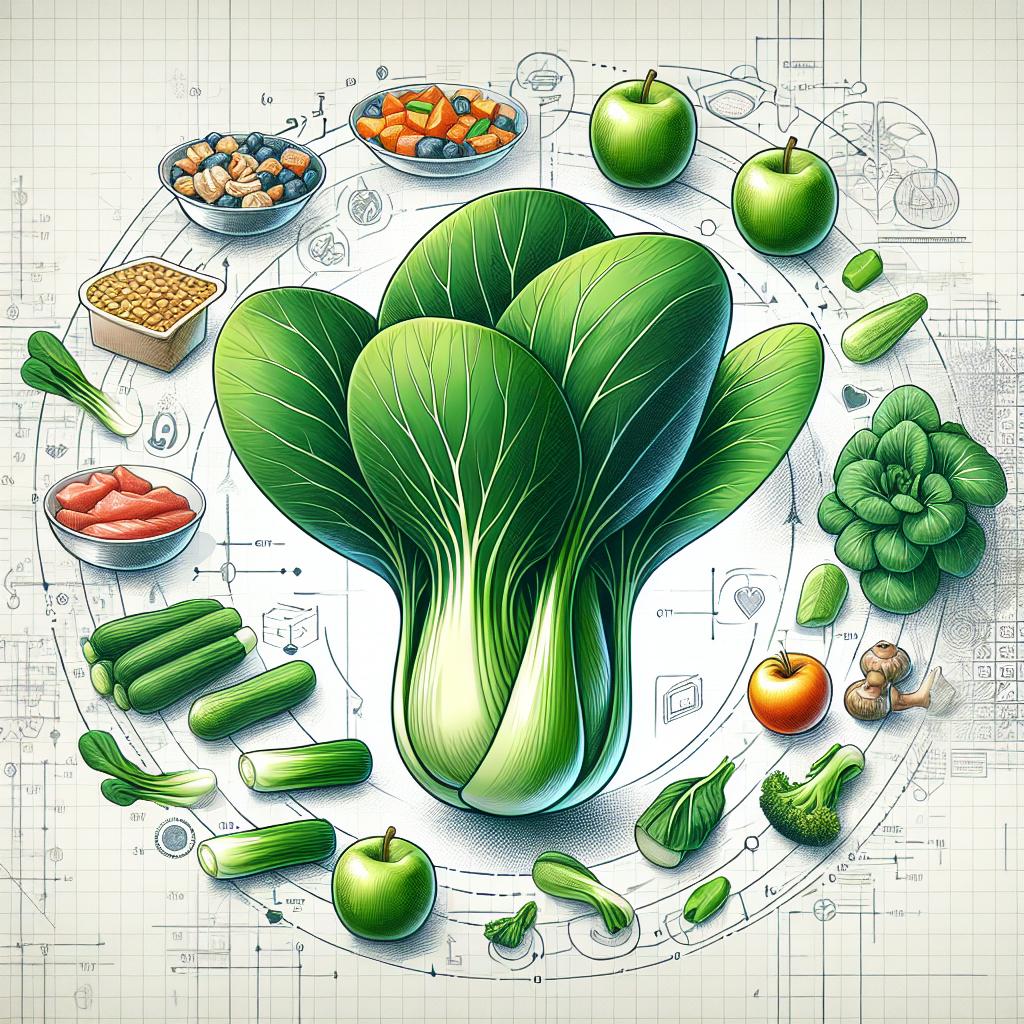
Let’s shine the spotlight on an often overlooked yet the nutrient-packed powerhouse of the leafy greens family, Bok Choy. This crunchy cruciferous vegetable, with its sweet, earthy flavour, is not just a staple in Asian cuisine; it’s a gold mine of health benefits waiting to be added to your diet.
Bok Choy, also known as Pak Choi, is an excellent source of vitamins A, C, and K, and contains an impressive line-up of minerals including calcium, potassium, and magnesium. These nutrients are essential for maintaining a robust immune system, strong bones, and regulating blood pressure. Furthermore, the presence of these vitamins and minerals make it an ally in warding off chronic diseases and nurturing overall well-being.
Chock-full of powerful antioxidants, such as beta-carotene, zeaxanthin, and lutein, Bok Choy is your eyes’ best friend, protecting them from harmful light and contributing to eye health. Given its nutritional profile, it’s easy to see why Bok Choy is a gem in the treasure trove of leafy greens:
- Rich in Vitamin A - for skin and vision health
- High in Vitamin C - a boost for your immune system
- Loaded with Vitamin K – essential for blood clotting and bone health
- Packed with minerals – including calcium for your bones
- Low in calories - making it perfect for weight management
Incorporating this green into your diet is also incredibly versatile. Whether it’s stir-fried, steamed, or sautéed, the delicate leaves of Bok Choy wilt gracefully, delivering a comforting addition to any meal without overshadowing other flavors. It serves not just as a side dish but can also be the star of the plate in vibrant salads or hearty soups.
| Nutrient | Amount per 1 Cup (cooked) | % Daily Value |
|---|---|---|
| Calories | 20 | 1% |
| Vitamin A | 7223 IU | 144% |
| Vitamin C | 44.2 mg | 74% |
| Vitamin K | 57.8 mcg | 72% |
| Calcium | 158 mg | 16% |
Imagine a green that hits all the right notes in nutrition, taste, and versatility. That’s what you get with Bok Choy. So, next time you’re crafting your healthy diet blueprint, let Bok Choy take its rightful place as a cornerstone of your culinary creations. The benefits are as clear as they are abundant – your body will thank you for this Asian gem.
Discovering the Delicate Strength of Microgreens

Amidst the pantheon of leafy greens, microgreens stand out as tiny titans, packing not just flavor but an impressive nutritional punch. These little wonders sprout from vegetable seeds, including popular varieties such as radish, kale, and arugula, and are harvested just after the first true leaves develop. Microgreens are more than just garnishes on your dish; they are potent allies in the quest for health and wellbeing.
One of the most compelling reasons to incorporate microgreens into your diet is their concentrated nutrient profile. Studies have shown that these minuscule plants boast nutrient levels often higher than their mature counterparts. They are rich in vitamins C, E, and K, and packed with antioxidants that bolster your immune system against environmental stressors. Including a handful of microgreens can significantly elevate the nutritional quality of your meals.
- Vitamin C – An essential nutrient known for strengthening the immune system
- Vitamin E – Vital for maintaining healthy skin and eyes
- Vitamin K – Crucial for blood clotting and maintaining strong bones
The flexibility of microgreens in culinary applications is another persuasive point. They add a crisp, fresh texture and a peppery note to salads, sandwiches, and wraps. These greens can also be lightly sautéed to retain their nutritional integrity while adding excitement to warm dishes such as omelets or pastas. More than just versatile, microgreens invite you to be creative, encouraging experimental combinations that tantalize the palate and feed the body.
| Type of Microgreen | Key Vitamins | Flavor Profile |
|---|---|---|
| Radish | C, K | Spicy, robust |
| Kale | A, C, K | Slightly bitter, earthy |
| Arugula | A, C, K | Peppery, nutty |
| Pea Shoots | A, C | Sweet, crunchy |
It’s not hard to see why microgreens have earned their reputation as a powerhouse among vegetables. They are not only bursting with nutritional value but also serve as a canvas for the culinary imagination. With just a sprinkle, they transform the mundane into something remarkable, proving that even the smallest foods can have a mighty impact on our health and taste buds. Embrace the delicate strength of microgreens and let them elevate your daily greens intake to vibrant new heights.
Romaine Calm: The Heart-Healthy Champion of Greens

Let’s toss ourselves into the world of leafy greens and unfold the story of a vegetable that’s more than just a staple of a Caesar salad. Imagine a leaf so lush that it holds the power to bolster your heart health, leaf by leaf. This is where our verdant hero enters – the robust and crunchy delight known as romaine lettuce.
What sets this veg apart in the leafy lexicon is its impressive nutrient profile. At its core, romaine lettuce is a trove of heart-loving fiber, which is essential for maintaining a happy and healthy cardiovascular system. Fiber isn’t the only card up this green’s sleeve; it also comes packed with potassium, a mineral paramount in managing blood pressure levels. But the tale of nutrients doesn’t end there. Each bite offers a wealth of vitamins A, K, and C, transforming your meal into a fortress guarding your wellbeing.
- Vitamin A – A visionary nutrient, promoting impeccable eye health
- Vitamin K - The unsung hero of bone strength and blood coagulation
- Vitamin C – A potent antioxidant, forging armor against free radicals
Grounding our praise in numbers, let’s chart romaine’s virtues. Like any champion, it thrives without the need for excess calories. Here’s a simple breakdown in a table that might just tempt you to turn a new leaf in your dietary choices:
| Nutrient | Amount Per Cup (47g) | % Daily Value |
|---|---|---|
| Calories | 8 | 0.4% |
| Total Fat | 0.14g | 0.2% |
| Fiber | 1g | 4% |
| Potassium | 116mg | 2.5% |
| Vitamin A | 4090 IU | 82% |
| Vitamin C | 2mg | 3% |
| Vitamin K | 48.2µg | 60% |
Championing heart health isn’t a sprint; it’s a marathon. And in this race, romaine lettuce is not just running alongside you – it’s setting the pace. So next time you’re in the greens aisle, ponder this: a salad bowl brimming with romaine isn’t merely a dish; it’s an investment in your heart’s vitality for years to come. And that’s an investment worth making every single crunch.
Dandelion Greens: The Wild Card of Wellness Wonders

Often overlooked in favor of more common leafy greens, dandelion greens are a powerhouse of nutrition that’s steadily gaining the spotlight. These ruffled-edge leaves are not only a novel addition to your culinary repertoire but also a robust contender in the nutritional heavyweight category. Picked fresh, their slightly bitter taste can add a flavorful punch to salads, smoothies, and sautéed dishes alike.
The benefits of these wild greens are impressive. They’re rich in calcium, which is essential for bone health, and loaded with antioxidants like vitamin C and beta-carotene that fight off damaging free radicals. Each bite provides a good dose of iron and potassium, key minerals for a range of bodily functions from maintaining healthy blood cells to balancing fluid levels.
- Vitamin K: A single cup of these greens can supply over 100% of your daily vitamin K needs, crucial for blood clotting and bone metabolism.
- Detoxification: They have a historical reputation as a detoxifier, believed to support liver health and aid in flushing toxins from the body.
- Digestive aid: The high fiber content aids digestion, helping to keep you regular and your gut bacteria healthy.
As a lesser-known superfood, dandelion greens can be effortlessly integrated into your diet. For those curious to track their nutritional intake, here’s a simple breakdown:
| Nutrient | Amount per Cup | % Daily Value |
|---|---|---|
| Calories | 25 | ~ |
| Fiber | 1.9 g | 7% |
| Vitamin K | 428 μg | 535% |
| Calcium | 103 mg | 10% |
| Iron | 1.7 mg | 9% |
Next time you’re strolling through your local farmers’ market, don’t pass by this wild wonder. Embrace the dandelion greens and let them elevate your health and your palate to uncharted territories of wellness. Dare to be different, your body will thank you for it!
Embrace the Taste of Health with Endive Enrichment

Unlock the secret to a vibrant diet with the often-overlooked star, endive. Think beyond the usual suspects in the leafy greens department, as this crisp, slightly bitter-tasting plant offers a wealth of benefits that cater perfectly to health connoisseurs. From its crunchy texture to its nutrient-dense profile, endive is your go-to ingredient for adding an invigorating twist to salads, soups, and side dishes.
Rich in Vitamins and Minerals, endive is loaded with essential nutrients, including folate, vitamins A and K, and is a good source of fiber. These nutritional powerhouses collectively support a range of bodily functions like vision, bone health, and proper digestion. Incorporating endive into your meals is an effortless way to amplify your daily nutrient intake while keeping calorie counts in check.
- Folate: Supports cell division and promotes fetal development.
- Vitamin A: Crucial for eye health and immune function.
- Vitamin K: Plays a critical role in blood clotting and bone metabolism.
- Fiber: Essential for digestive health and helps maintain a feeling of fullness.
Not only does endive boast a robust nutrient profile, it also pairs wonderfully with a myriad of flavors. Its mildly bitter edge serves as the perfect canvas for tangy dressings, sweet fruits, or nutty cheeses. For a balanced dish, toss chopped endive leaves with slices of pear, walnuts, and a drizzle of balsamic vinaigrette. The complementary flavors will dance on your palate and elevate your meal from simple to sublime.
Endive’s Health Benefits at a Glance:
| Nutrient | Benefit |
|---|---|
| Vitamins A & K | Strengthens immunity, enhances bone and vision health |
| Fiber | Promotes satiety, aids in digestive regularity |
| Folate | Crucial for fetal development and cell repair |
So, as you explore the verdant world of leafy greens, let endive be your next culinary muse. Its crisp leaves not only harbor an abundance of health benefits but also introduce a refreshing diversity to your plate. Challenge your palate and give yourself the nutritious advantage by incorporating the enigmatic endive into your green repertoire. Trust me, your body and taste buds will thank you.
Q&A
**Q: Why should I include leafy green vegetables in my diet?**
A: Embracing leafy greens in your diet is like giving a standing ovation to your health! These vibrant veggies are nature’s multivitamins, packed with a symphony of nutrients including vitamins A, C, and K, as well as iron, fiber, and potent antioxidants. Leafy greens can turn your body into a fortress, bolstering the immune system, and fortifying bones. Plus, their low calorie count harmonizes beautifully with any weight management melody. So go ahead, let leafy greens take the lead in your daily dietary dance!
**Q: Can you give me a quick rundown of some of the healthiest leafy greens?**
A: Absolutely! Imagine a lineup of superheroes, each with unique powers. At the top, we’ve got kale – the sturdy, nutrient-dense powerhouse. Spinach sprints in close behind with its versatile flavor and iron-packed leaves. Chard brings a colorful splash with red and yellow stems, plus a wealth of vitamins. Romaine stands tall and crunchy, while arugula spices things up with a peppery kick. And that’s just the opening act! There are at least eight more leafy legends waiting to jazz up your meals.
**Q: I’ve heard kale can be tough to eat. How can I make it more palatable?**
A: Kale may seem tough, but it’s really just a teddy bear at heart. To turn those rugged leaves into tender bites, give them a good massage. Yes, you read that right! Rubbing the leaves with a bit of olive oil and lemon juice breaks down the fibers, resulting in a softer, more digestible greens. For an even jazzier number, toss kale into a hot pan for a quick sauté, or bake them into crispy chips. Let your culinary creativity take the lead!
**Q: What’s the big deal about spinach? It’s just a leaf, right?**
A: Oh, but it’s not “just a leaf” – it’s a super leaf! Spinach is the quiet hero hidden in plain sight, boasting more iron per calorie than red meat and acting as a treasure trove of vitamins and minerals. It’s a versatile performer, equally stunning in raw salads, smoothies, or cooked dishes. Whether you’re looking to beef up your muscles or enrich your blood with iron, spinach is the leaf to beat. Don’t underestimate the power of this soft-spoken, leafy green!
**Q: Are there any lesser-known leafy greens I should try?**
A: Definitely! Step into the spotlight, watercress and endive! Watercress, with its subtly peppery flavor, makes a delightful addition to soups and salads, whereas endive, with its hint of bitterness and crispy texture, can transform any dish into a culinary masterpiece. Let’s not forget about collard greens, dandelion greens, and mustard greens – each with their own unique flavors and nutritional profiles. These hidden gems are waiting to dazzle your taste buds and boost your health!
**Q: How do leafy greens fit into a busy lifestyle?**
A: Leafy greens are like the best impromptu jazz session – quick, easy, and always a hit. Pre-wash and chop your greens at the start of the week, and you’re ready for an on-the-go salad or a lightning-fast sauté. Baby greens can be tossed into smoothies or layered in sandwiches with barely a second thought. With greens, you’ve got a whole ensemble of fast, nutritious options at your fingertips. So, go on, make those leafy greens the reliable rhythm section of your hectic life soundtrack!
**Q: I’m not a salad fan. How else can I enjoy these greens?**
A: Let’s riff off the traditional salad tune and get creative! Whip up a verdant pesto with basil or arugula; fold spinach into omelets, quiches, or pasta dishes for a velvety texture; or let collard greens serve as a sturdy wrap instead of tortillas. You can even sneak some greens into a fruity smoothie – we promise they’ll be the backup singers, never stealing the limelight from your favorite flavors. So dive into the culinary orchestra pit and let those leafy greens play a supporting role in your mealtime masterpieces!
The Conclusion
In the symphony of greens, each leaf plays a vital note: from the peppery punch of arugula to the velvety caress of spinach. We’ve danced through a garden of the 13 healthiest leafy green vegetables, each one a verdant virtuoso with its own health-promoting ballad. They’re not only the unsung heroes of the culinary world but also the guardians of our well-being—a pantheon of nutrient-dense powerhouses ready to uplift our bodies and spirits.
But knowledge, like a seed, requires action to grow. I invite you to transform this information into a daily feast for your senses and a boon for your health. Voyage to your local farmers’ market, cradle a bunch of kale in your arms, or whisper a thank you to a head of romaine, knowing it’s a gift wrapped in green. Weave these verdant threads into the tapestry of your meals and watch as the colors of vitality, energy, and wellness are embroidered into the fabric of your life.
Remember, the journey to a healthier you isn’t a sprint—it’s a delightful stroll through the garden. Each step, each choice, each leaf brings you closer to the harmony of health. So, fill your plate with the shades of emerald and chartreuse, and may your path be ever green and nourishing. Bon appétit!















